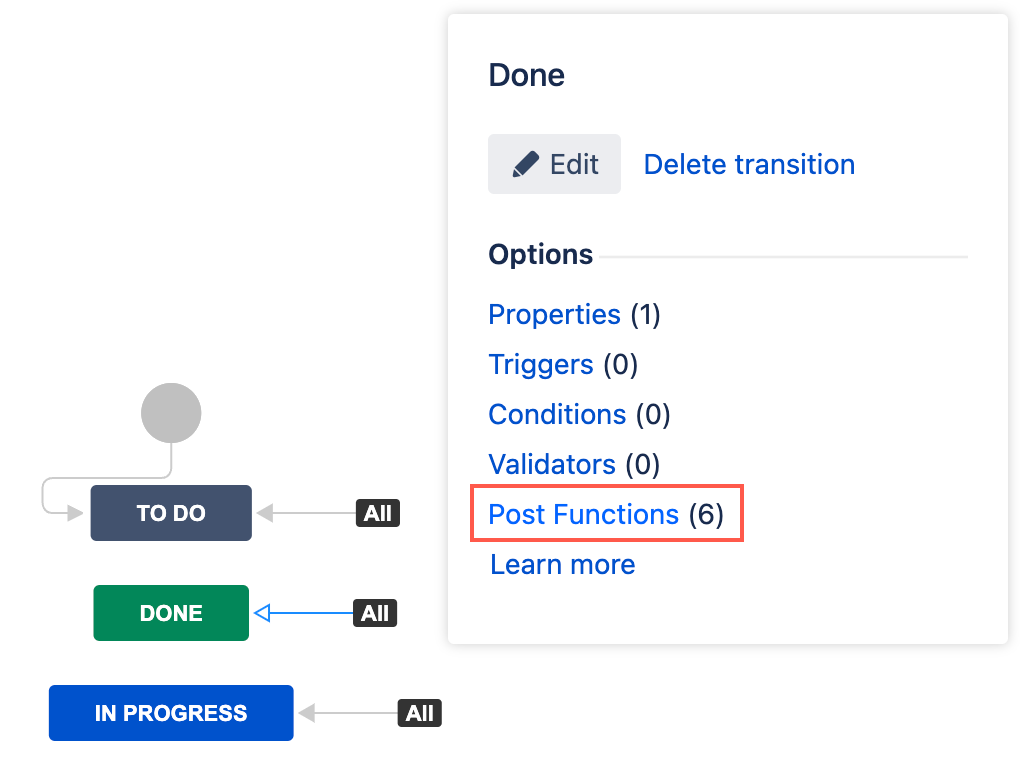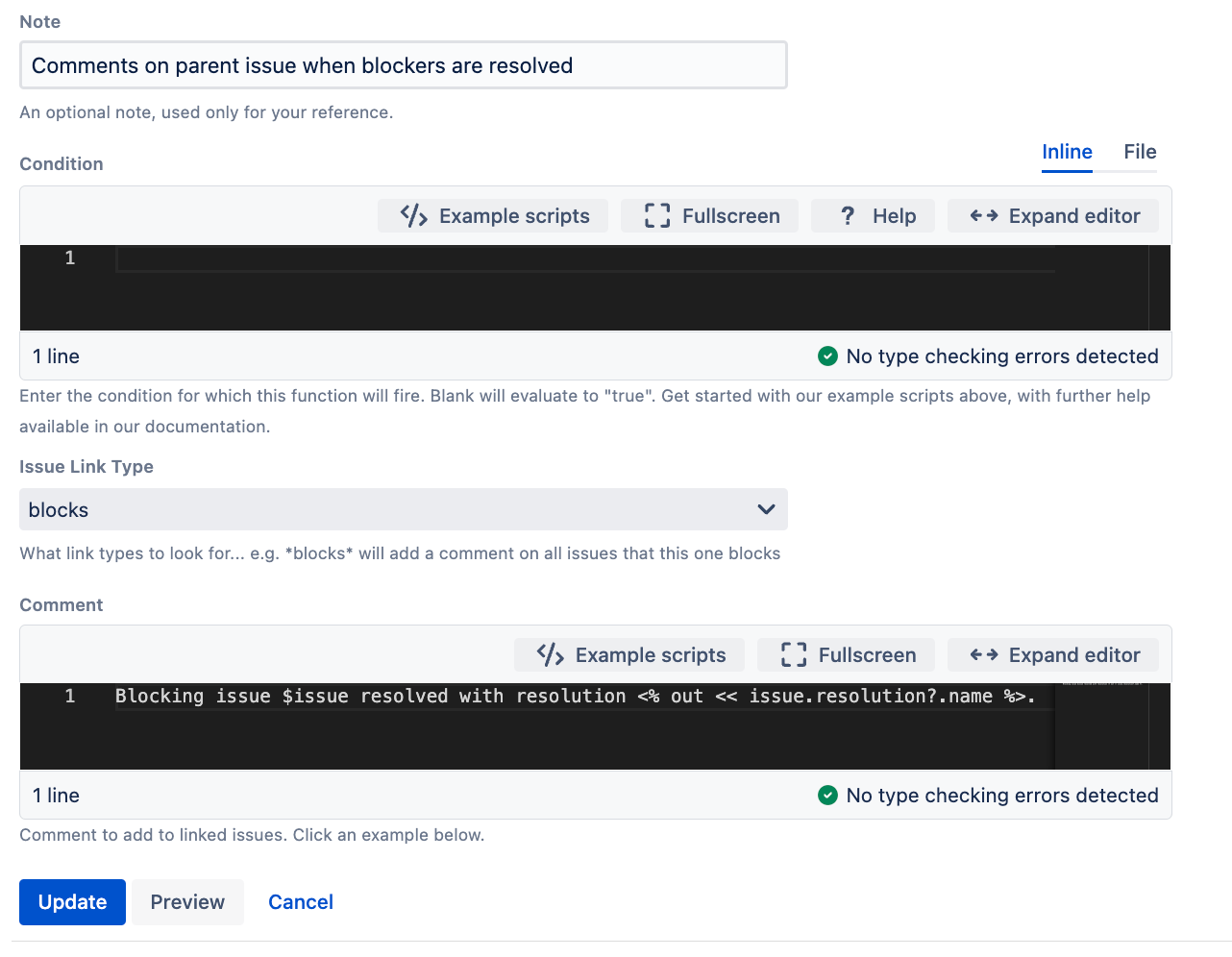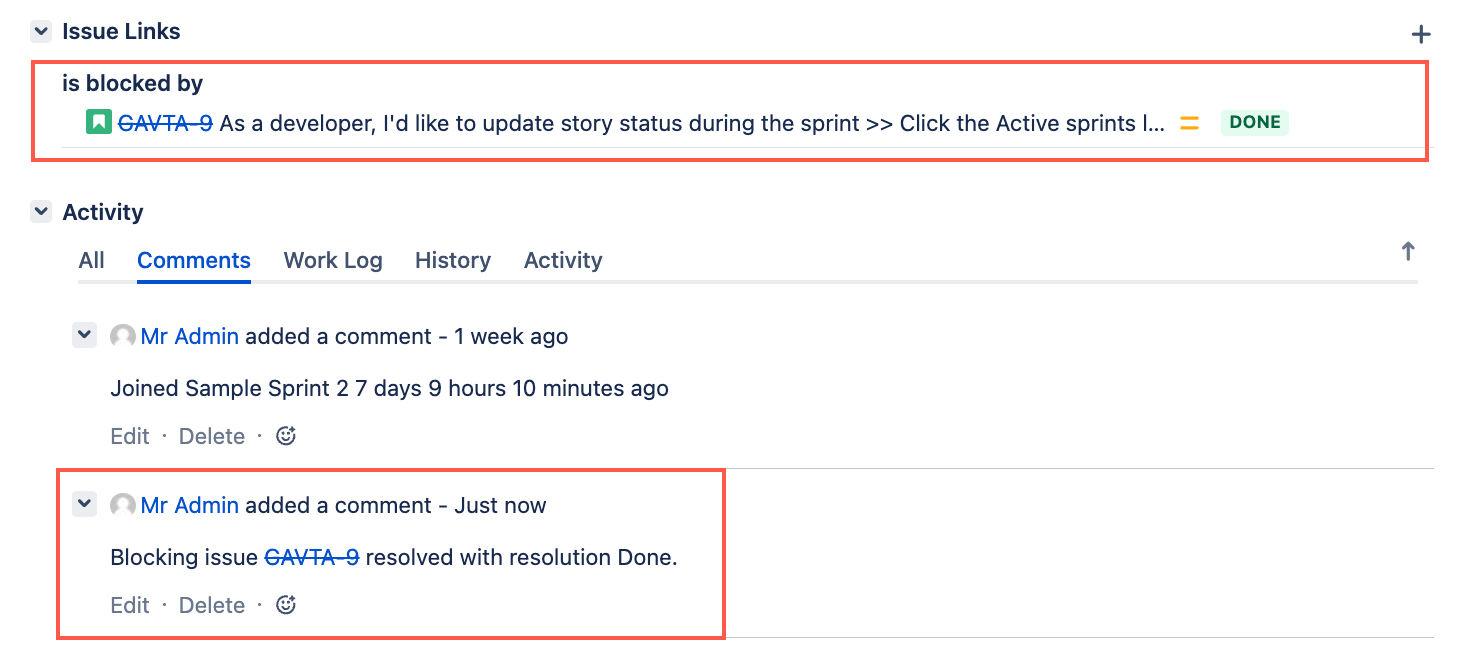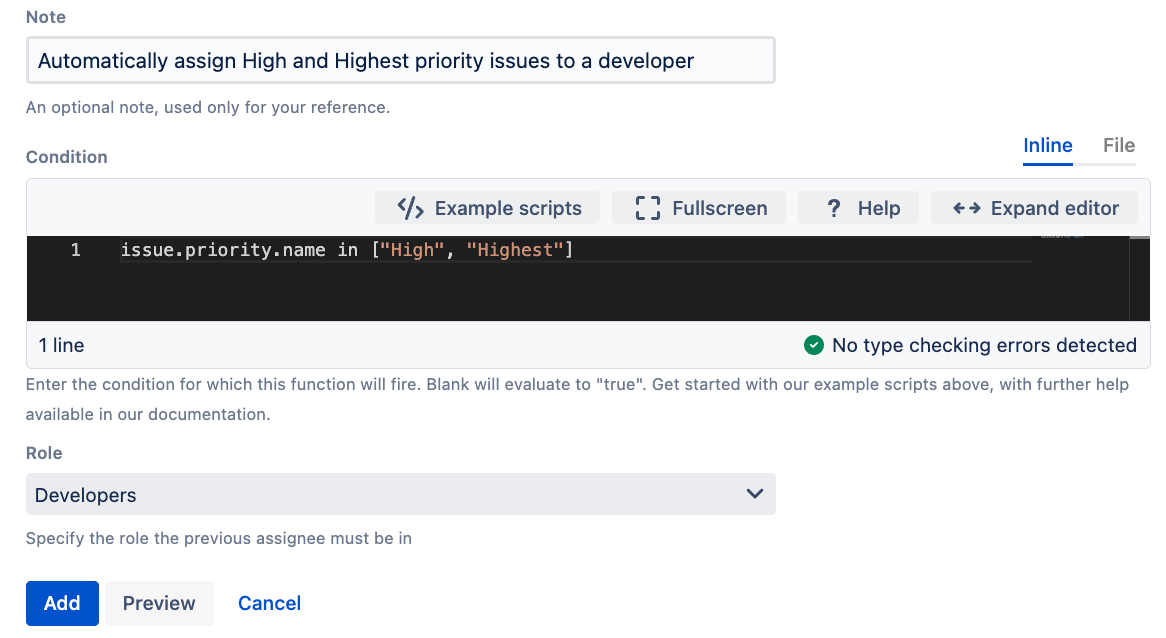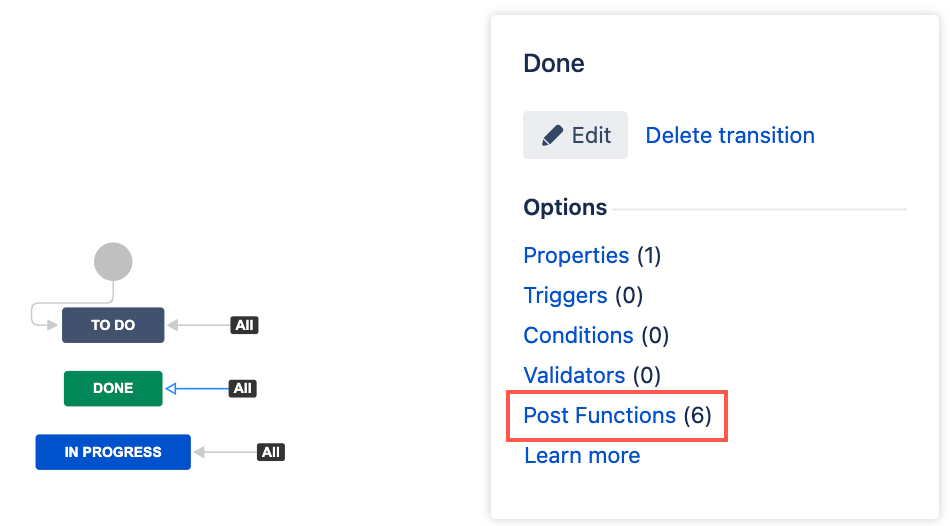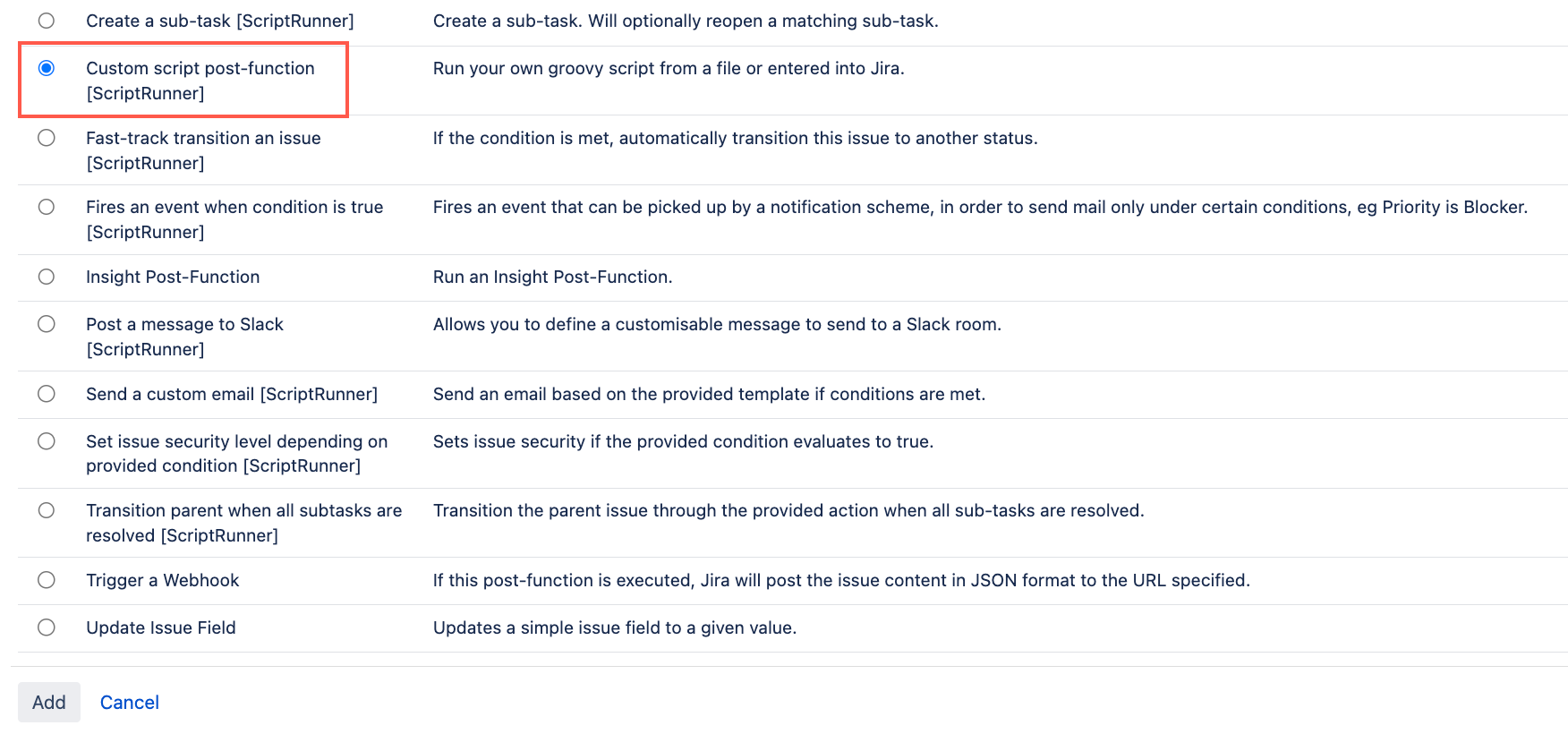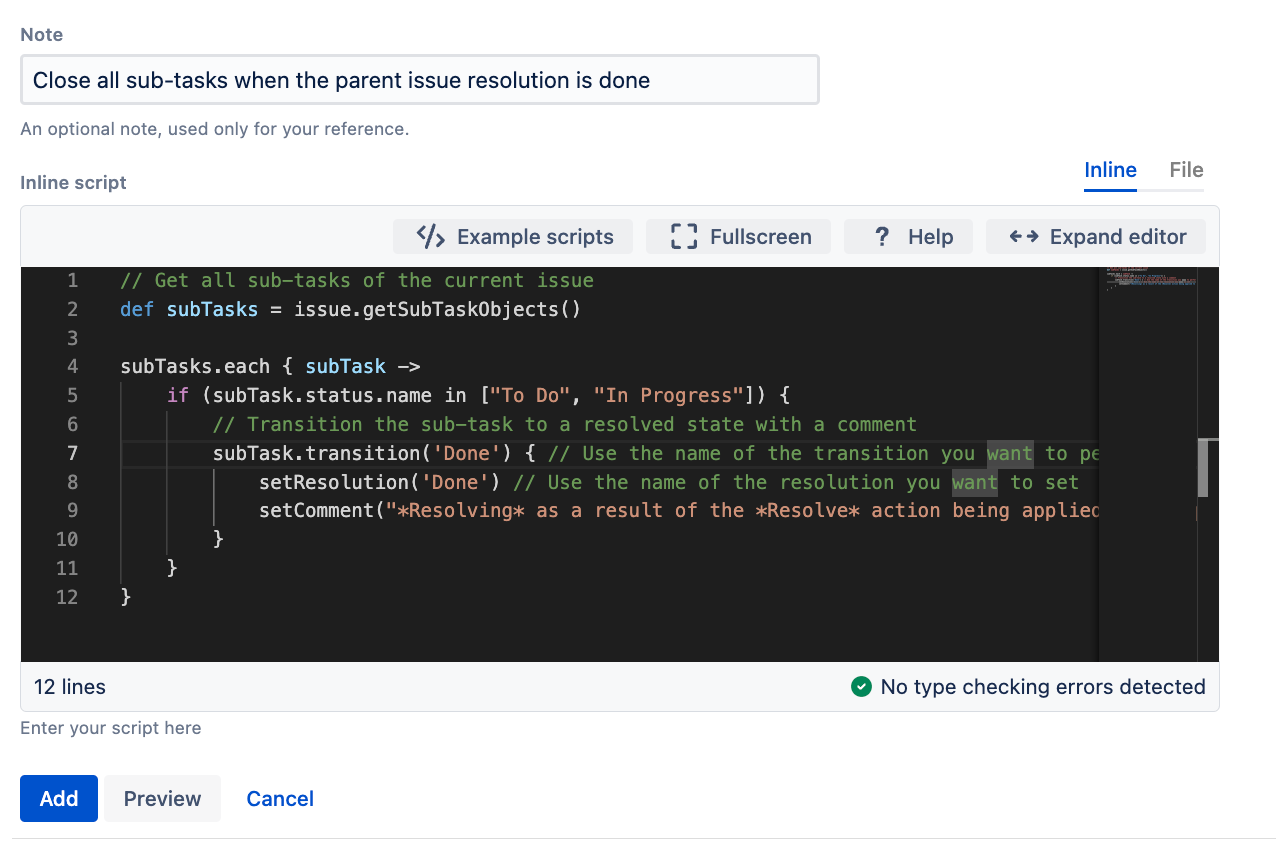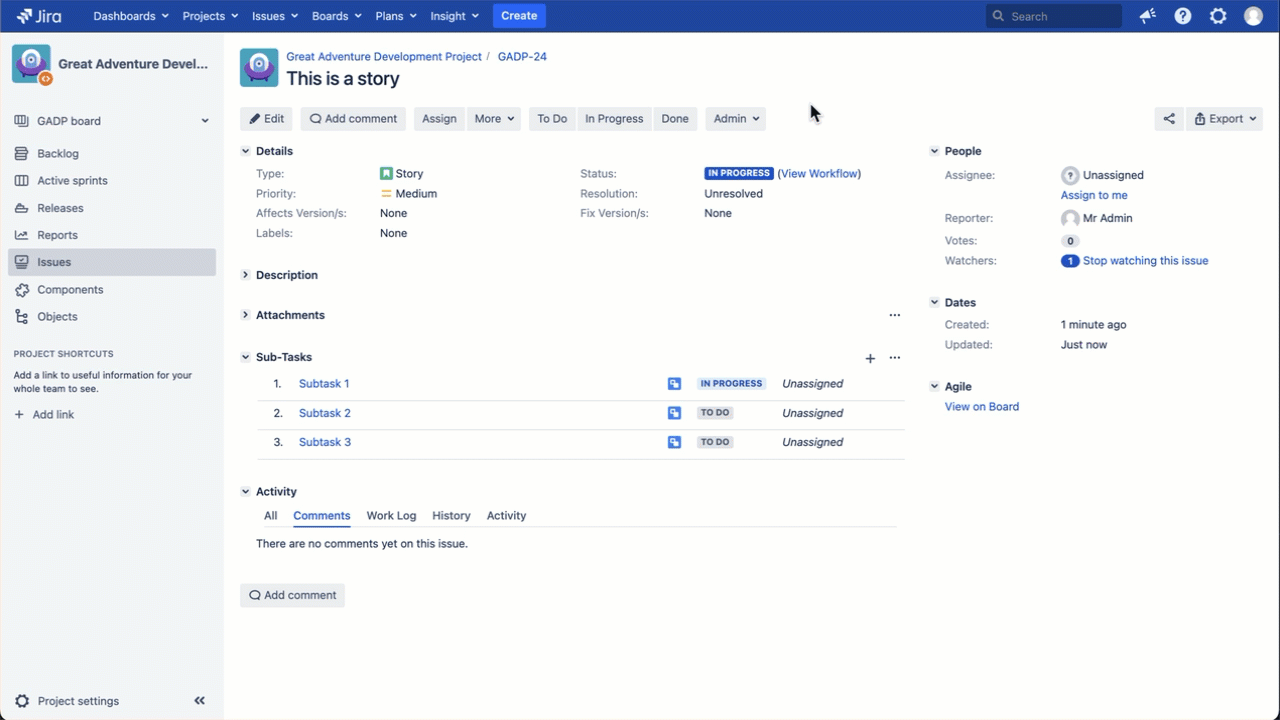Post Functions Tutorial
Before you start this tutorial, make sure you've read the Workflow Functions Tutorial page to understand what workflow functions are, for an overview of ScriptRunner workflow functions, and for details on how to access workflow functions.
For this tutorial, we assume you already have basic knowledge of how Jira workflow functions work.
What is Great Adventure?
Great Adventure is the fictitious company we use to help provide use cases and examples of concepts covered. Great Adventure has the same problems and issues faced by most companies and needs to automate more of their processes using ScriptRunner.
Overview of ScriptRunner workflow post functions
A post function is a workflow function that performs automated actions after an issue transitions to a new status. For example, you can add a ScriptRunner post function to an issue that adds a comment to specific linked issues when an issue is transitioned. Every Jira issue has some essential post functions that you can neither remove nor edit, but you can add additional post functions to your workflows. Depending on what your organization requires, you may want to use ScriptRunner post functions. ScriptRunner post functions allow you to do more in your workflow, providing extra control or information. ScriptRunner includes built-in post functions that you can use right away, but you can also create your own Custom script post-function. For a full list of our post functions, check out the available ScriptRunner workflow post functions.
Custom script post function
A ScriptRunner Custom script post-function requires some Groovy scripting but allows you to tailor your post function to your needs using inline scripts. You can add the code inline or upload a script file. If you are comfortable working in Groovy, you may want to use this custom option for your scripted post functions in Jira. If you aren't entirely comfortable, you can still use one of our post function example scripts.
Navigate to ScriptRunner workflow post functions
All of the ScriptRunner workflow functions are found alongside Jira workflow functions.
You can add a ScriptRunner post function to a workflow transition as follows:
- Go to Administration > Issues > Workflows.
- Select Edit on the workflow you want to add a post function to.
- Select the transition to which you wish to add a post function.
- Under Options, select Post Functions.
- Select Add post function.
All available ScriptRunner post functions display along with all other available post functions. ScriptRunner post functions have a suffix of [ScriptRunner].
Examples of ScriptRunner workflow post functions
Below are some easy-to-follow examples that will help you understand how ScriptRunner workflow post functions work.
We recommend that you do any script testing in a test instance and not your production instance.
We recommend you set up and use a sample project for the following examples. See the Tutorials page for more information on creating a sample project.
Built-in ScriptRunner workflow post functions
Adds a comment to linked issues when this issue is transitioned
Before you start this example, make sure you have a suitable workflow that includes a transition to Done (or equivalent).
Great Adventure needs to add comments on blocked issues when the parent blocker issue has been resolved. This comment should indicate that the main issue was fixed and the blocked issue may be closed now. To help with this situation, Great adventure plans to use the Adds a comment to linked issues when this issue is transitioned post function.
- Go to Administration > Issues > Workflows.
- Select Edit on the workflow you want to add a post function to.
- Select the transition to which you wish to add a post function. In this example, we select the transition that leads to Done.
- Under Options, select Post Functions.
- On the Transition page, select Add post function.
- Select Adds a comment to linked issues when this issue is transitioned [ScriptRunner].
- Select Add.
- Optional: Enter a note that describes the post function (this note is for your reference when viewing all post functions). In this example we enter
Comments on parent issue when blockers are resolved. - Optional: Enter a condition. An empty condition evaluates the function to
true. In this example, we leave the condition blank. - Select the link type. In this example we select
blocks. Add the following comment:
groovyBlocking issue $issue resolved with resolution <% out << issue.resolution?.name %>.- Select Preview to see an overview of the change.
Select Update.
Reorder your new post functions using the arrow icons on the right of the function (they can only move one line at a time). Make sure this post function occurs after the pre-generated post functions.
Select Publish and choose if you want to save a backup copy of the workflow.
You can now test to see if this post function works.
Create an issue and a blocked issue that uses the workflow you edited.
Transition the blocker issue to Done (or equivalent).
Go to the blocked issue.
Under Activity, you should see the comment added automatically. If you see the comment added, you are good to go with this script post function.
Assign to first member of role when an issue is high priority
Great Adventure is having problems with high priority bugs being missed by the development team. To resolve this Great Adventure wants to make sure all High and Highest priority issues are automatically assigned to a developer using the Assign to first member of role post function.
- Go to Administration > Issues > Workflows.
- Select Edit on the workflow you want to add a post function to.
- Select the transition to which you wish to add a post function. In this example, we select the Create transition.
- Under Options, select Post Functions.
- On the Transition page, select Add post function.
Select Assign to first member of role [ScriptRunner].
- Select Add.
- Optional: Enter a note that describes the post function (this note is for your reference when viewing all post functions). In this example we enter
Automatically assign High and Highest priority issues to a developer. Enter the following condition:
groovyissue.priority.name in ["High", "Highest"]- For Role, select Developers.
- Select Preview to see an overview of the change.
Select Update.
- Select Publish and choose if you want to save a backup copy of the workflow.
You can now test to see if this post function works:
- Create a High or Highest priority issue in your chosen project.
- Check if the new issue is automatically assigned to a developer.
Scripted ScriptRunner workflow post function example
Close all sub-tasks when the parent issue resolution is done
Before you start this example, make sure you have a suitable workflow that includes a transition to Done (or equivalent).
Great Adventure want to close sub-tasks automatically when a parent task is marked as Done. To resolve this Great Adventure can use a Custom script post-function.
- Go to Administration > Issues > Workflows.
- Select Edit on the workflow you want to add a post function to.
- Select the transition to which you wish to add a post function. In this example, we select the Done transition.
- Under Options, select Post Functions.
- On the Transition page, select Add post function.
Select Custom script post-function [ScriptRunner].
- Select Add.
Optional: Enter a note that describes the post function (this note is for your reference when viewing all post functions). In this example we enter
Close all sub-tasks when the parent issue resolution is done.Make sure you update the resolution, statuses, and transitions to appropriately match your workflow and instance.
groovy// Get all sub-tasks of the current issue def subTasks = issue.getSubTaskObjects() subTasks.each { subTask -> if (subTask.status.name in ["To Do", "In Progress"]) { // Transition the sub-task to a resolved state with a comment subTask.transition('Done') { // Use the name of the transition you want to perform setResolution('Done') // Use the name of the resolution you want to set setComment("*Resolving* as a result of the *Resolve* action being applied to the parent.") } } }Select Update.
- Reorder your new post functions using the arrow icons on the right of the function (they can only move one line at a time). Make sure this post function occurs after the pre-generated post functions.
- Select Publish and choose if you want to save a backup copy of the workflow.
This post function is successful if, when the primary task is marked as Done with a Resolution of Done, all associated sub-tasks are also closed.


